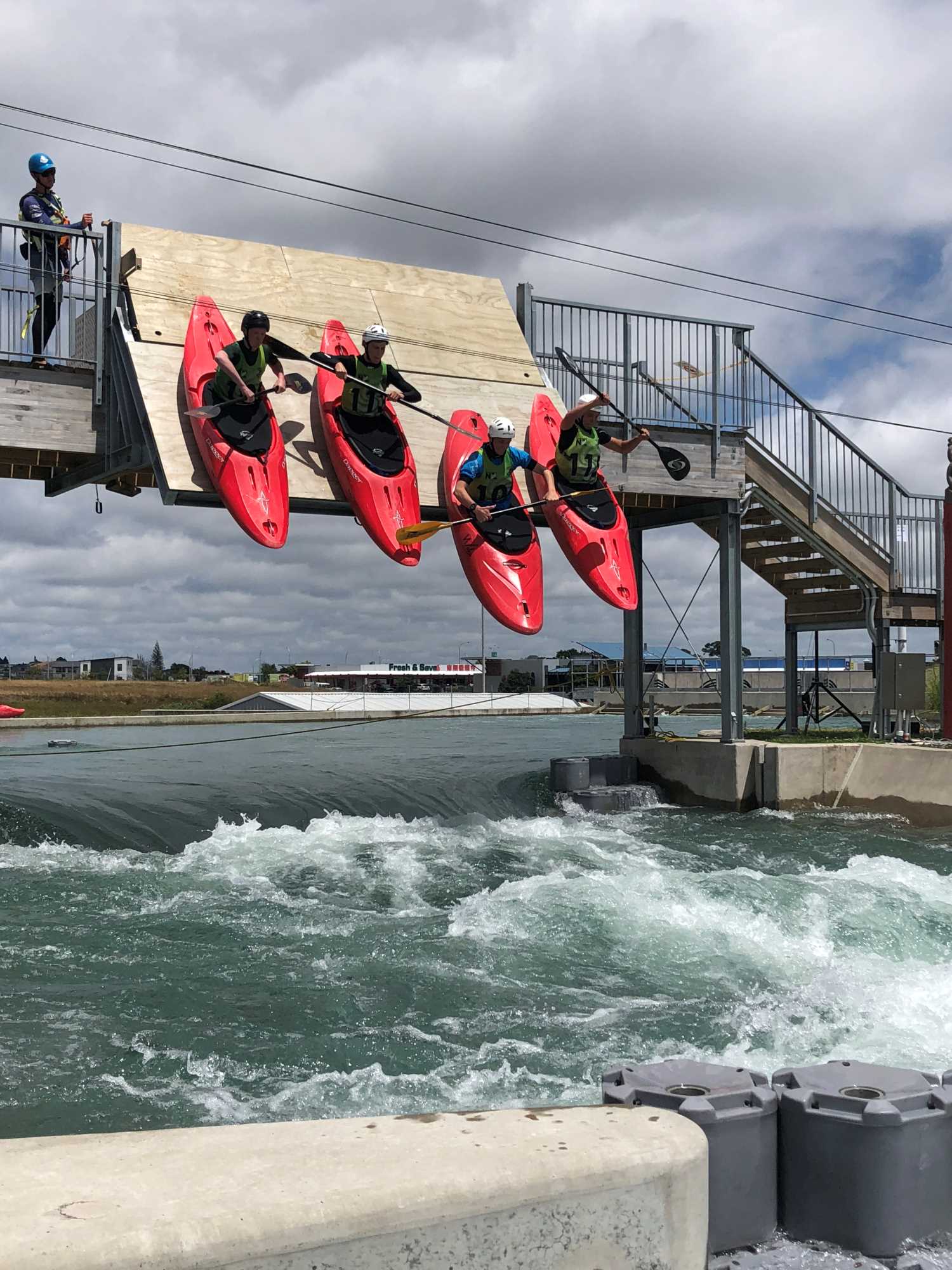KAYAK CROSS
What is Kayak Cross?
Kayak Cross (formerly extreme slalom) first appeared on the ICF’s World Cup program in 2015, and since then the growth has been phenomenal.
Athlete numbers have been increasing every season, more and more tv networks are showing the races live, and the sport will now be included as part of the Paris 2024 Olympics.
Kayak Cross is a combination of all canoeing’s white water disciplines, with competitors racing in identical plastic creek boats.
The excitement begins from the very start, with four competitors sliding off a ramp more than two metres above the water and splashing onto the course as one.
From there it’s a race to the first buoy, and it really is a case of anything goes as each paddler tries to steal an advantage over their opponents.
Athletes need to negotiate both downstream and upstream buoys, and contact is allowed – adding to the thrills and spills and excitement for spectators and athletes alike.
Then there’s the compulsory eskimo roll. Athletes only have a short window of opportunity to successfully roll their kayaks, and they need to do a complete 360 degree flip.
There are a variety of ways to get disqualified – breaking the start, missing a buoy, dangerous paddling, and failing to complete the eskimo roll within the allocated area.
Most races are over in around a minute, but times are not important. Kayak Cross is very much a race of tactics, and often it does not pay to lead early. Athletes also have choices to make, including which side of the course they should take.
One of the major attractions of extreme slalom is the diversity of countries taking part. Athletes from regions where canoe slalom is still in its infancy are embracing extreme events, and the results have been very exciting. We know our NZ athletes have an exciting future ahead to stand on the podium in this event.
Canoe Slalom NZ
Vector Wero Waterpark
Great South Road, Manukau
PO Box 16-292
Bethlehem, Tauranga
New Zealand

 Admin Login
Admin Login